After an enjoyable day at Agriturismo Stallaini in early May (see link below), our host Manuela Sarcià forwarded recipes for the cavatelli pasta and the small cassatas—called cassatinas—that we made in together on a long dining room table.
I have added some of my own notes and directions based on my memories and record of what we did, plus my attempt to duplicate the little cassata at home, with some almond paste (pasta di mandorle) that I brought back from Sicily.
It was challenging and a lot of fun—and my neighbor Susie Raycroft, always a willing and honest taste tester (the best kind!), pronounced it delicious.
Shortly after making the little cassata, I also tried making cavatelli with a rigagniocchi, the little wooden tool for shaping these small ridged shells, that I brought back from Sicily. I used a mix of Tipo “00” flour mixed with a little stoneground spelt. The results were pretty good, but I know I can do better. Perhaps you will read about it in a future post!
Cavatelli
Ingredients:*
For the cavatelli pasta, Manuela suggested using all-wheat flour (in Italian: “integrale”), but said that semolina flour could also work. On the farm, the family grows an heirloom variety that’s popular in southern Italy called Senatore Cappelli, named for a late 19th-century marquis who was senator of the Kingdom of Italy before the country became a republic. The flour she uses includes a little crusca—bran.
Water: Use as much as you need to create a dough that “is soft but not sticky.”
Making cavatelli:
Depending on how much pasta you want to make, pour a small “volcano” of flour—perhaps 1 to 2 cups—in a bowl. (If you want to color the dough red or green, you can add a little tomato sauce or pesto.)
Make a cavity in the center of the mound of flour and add water a little at a time, mixing it into the center part of the mound with your fingertips, moving in concentric circles, pulling in more flour as you go.
Little by little, mix in more water and flour, squeezing the mixture from time to time to help form a ball, adding a bit more water, until you have a dough that holds together and is ready for kneading. It should be pretty solid, neither too dry or wet.
Then comes the kneading. Manuela accomplishes this using the heels of her hands to push the ball of dough down a few times, then switching from hand to hand in a practiced rhythm to work the dough to create a “gluten net” that will hold it together. It takes a bit of muscle.**
Break off pieces of the dough and roll them into long, thin ropes of dough with the palms of your hands, pushing outward from the middle.

Use the side of a fork or a small knife to cut the dough into small pieces.
If you have a rigagniocchi, use your thumb to press and roll the little pieces of dough gently against the vertical grooves to create the signature ridged shell shape.
To shape the cavatelli by hand, after cutting the rope into small sections, press your finger down into the pieces of dough and drag your finger toward you, stretching the dough until the edges curl into the cupped cavatelli shape. Or, suggests Manuela, you can use a fork pressing the dough against your thumb. (I’m not quite sure how that works, but you can try it, and then tell me!)
If you have a machine with a cavatelli attachment, you can feed the ropes of dough into that.
Once you have used all your dough to create the cavatelli, it’s time to take it to the kitchen to cook.
Making Pesto Stallaini & preparing the pasta***
In a blender put extra virgin olive oil, sea salt, fresh aromatic herbs that you like (Roy, Manuela’s father, used rosemary, thyme and mint), plus a garlic clove.
Prepare a pot of boiling, salted water, and add the pasta. When the pasta floats to the surface, it is al dente and should be removed.
Mix the al dente pasta in another pan with the pesto you have made. Cook the pasta a little more. Then spoon in some ricotta and a bit of reserved pasta water to add some starch and make the sauce more creamy. Instead of ricotta, you can add some parmesan cheese if you prefer.
Buon appetito!
Notes for cavatelli recipe:
*Manuela didn’t provide exact measurements of flour and water for making the pasta, which she said was passed down from her beloved grandmother, Matilde, with whom she has fond memories of making cavatelli every Sunday, beginning when she was just three.
**I notice that the dough at this point is elastic and smooth, like bread when it’s well-kneaded but quite a bit firmer.
***Again, no exact measurements were provided for Manuela’s father Roy’s pesto.
Cassatina Siciliana
(Agriturismo Stallaini version)
Ingredients:*
- 100 g ricotta cheese**
- 1 to 2 teaspoons of brown sugar or honey
- a pinch of cinnamon
- a pinch of orange zest
- dark chocolate or pure 100% chocolate, chopped
- candied orange chopped
- marzipan for the external shell***
- ladyfinger cookies
- limoncello or lemon syrup
- fruits, edible flower or candied fruit for decoration
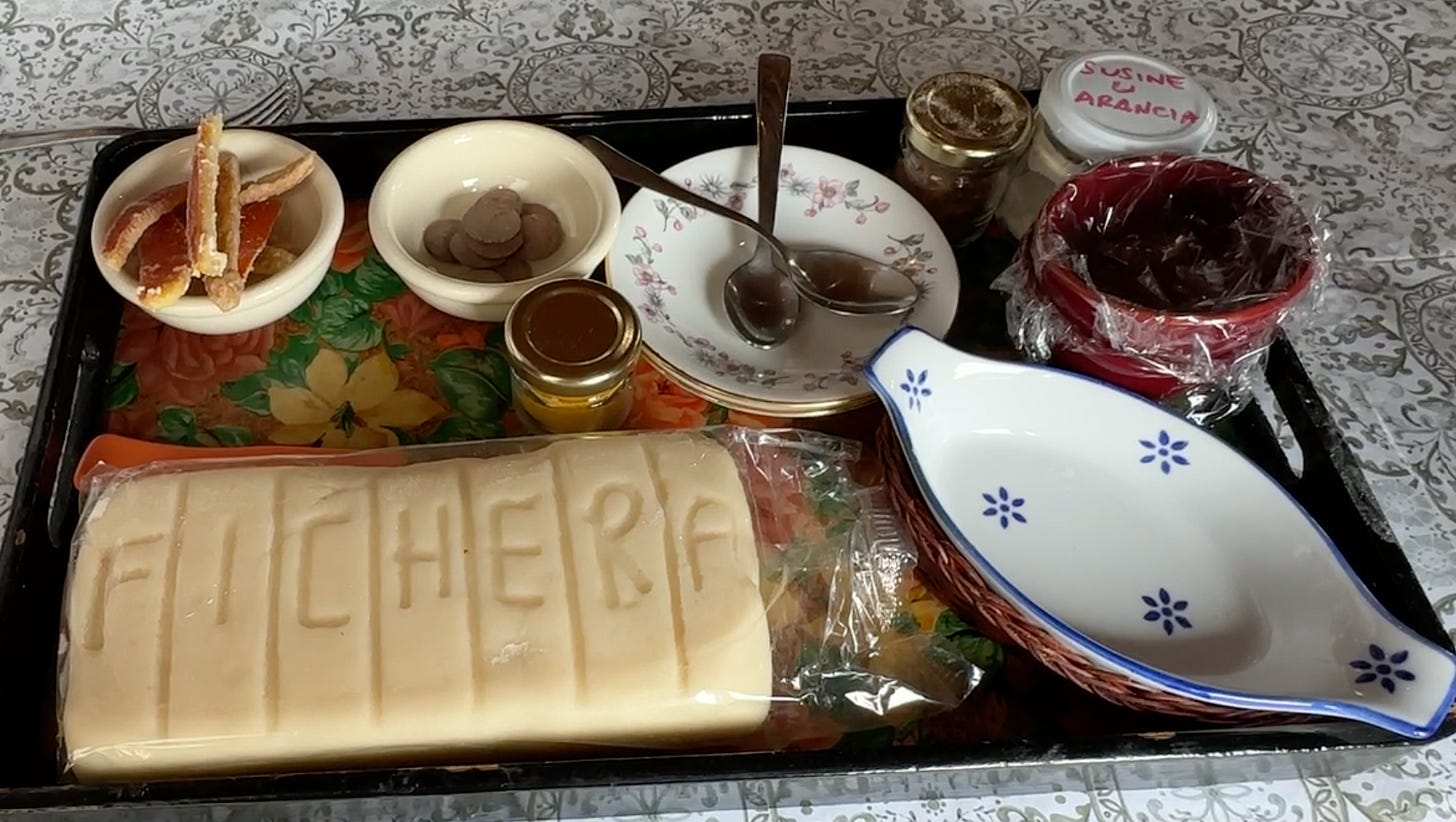
Directions:
Pick out a small bowl to use as a “form” for your cassatina. Line the bottom and sides of it with plastic wrap, letting some of it drape over the edges.
In another small bowl, measure the ricotta (you may need more, depending on the size of your bowl)
Chop candied orange peel**** and chocolate.
Mix sugar, candied peel, chocolate, cinnamon and zest into the ricotta.
Break off a generous portion of a block of marzipan (or use the whole piece if it’s small) and use a rolling pin to roll it into a circle. Manuela tells me to “roll it so thin you can see the color of the tablecloth through the dough.” Otherwise, the pastry will be too sweet.
Fit the almond paste dough into the plastic-lined bowl, pressing it to smooth the wrinkles and folds into the sides, patching with scraps as need be. The pastry should be fitted all the way to the top, with the extras broken off and the edges smoothed flush with the bowl’s edge.
Spoon the ricotta mixture into the marzipan shell, filling it all the way to the top and smoothing it to make it level with the rim of the bowl.
Pour an inch or so of limoncello or diluted lemon syrup into a flat rimmed plate. Break one or two ladyfingers to fit the top of the bowl/mold of the cassatina. Dip them briefly in the limoncello or syrup. (They should be damp but not drenched.)
Fit the cookies atop the mold, shaping to fit.
If you have the time, cover the bowl and its contents with plastic wrap and put it into the fridge to rest for up to 24 hours to stabilize before turning it out onto a plate.
As we didn’t have the time during our class, we made a comical incantation (something like “bibbety bobbity boo!”) and prayed our little cakes would emerge without harm when we tipped over the bowls and gently knocked out the contents. They did!
Decorate with chopped peels, edible flowers and fresh fruits (we used a few slices from the kumquats we’d picked at the farm).
There are many other recipes for cassatas, the larger version of these cakes which are a classic and beloved Sicilian dessert often served for Easter or Christmas and decorated in fanciful ways. But the one we made at Agriturismo Stallaini was quite simple and delicious. I hope you give it a try and then report on how it turned out.
Notes for cassatina recipe:
*Other than the ricotta cheese, the measurements of other ingredients are variable, depending on your taste and the size of the mold (or molds) you use to make your cassatina(s).
**Ricotta in Sicily is different than the commercial varieties here. For this recipe, you need a fairly firm ricotta. You might consider making your own or buying a good commercial brand and possibly draining it through a cheesecloth if it’s too watery. I actually ended up making my own ricotta using this recipe, then adding a bit of commercial ricotta because I’d made mine too thick.
***I brought back some almond paste from Italy that I used at home, but you can find some brands at the grocery, order it online or make it yourself. Both marzipan and almond paste are made of a blend of almonds, sugar and flavoring, but marzipan has quite a bit more sugar and a finer, less grainy texture. I wasn’t sure if the pasta di mandorle (which translates as almond paste!) I picked up in Sicily was marzipan or not—I ended up using it in my cassatina anyway—and it worked out well. But here in the U.S., I would look for a product actually labeled marzipan. Here’s a link to a site with more information—and a recipe for marzipan.
****You can candy your own orange peel at home or buy some. Manuela and her dad made the peel we used, which was delicious. I didn’t have time do it myself, so I bought some Sweetened Dried Orange Slices at Trader Joe’s and used the peel.

Thanks for reading. If you decide to try either of these recipes or have any questions, please let me know in the comments.

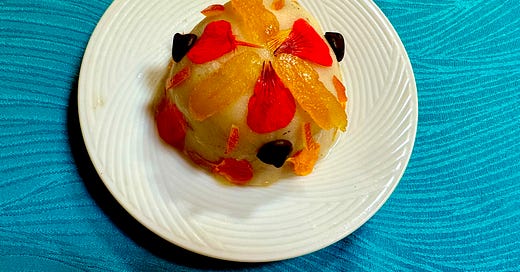

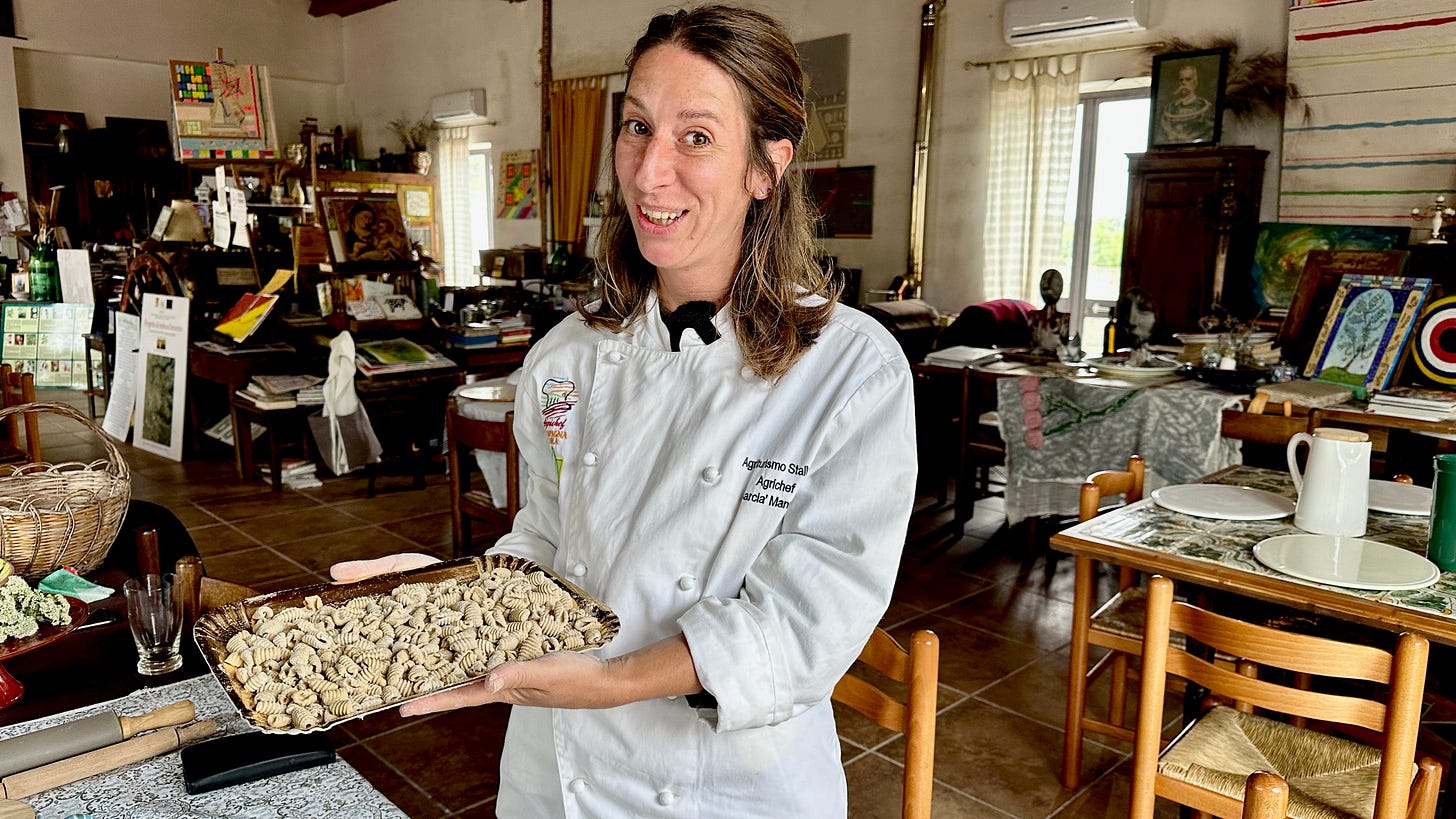



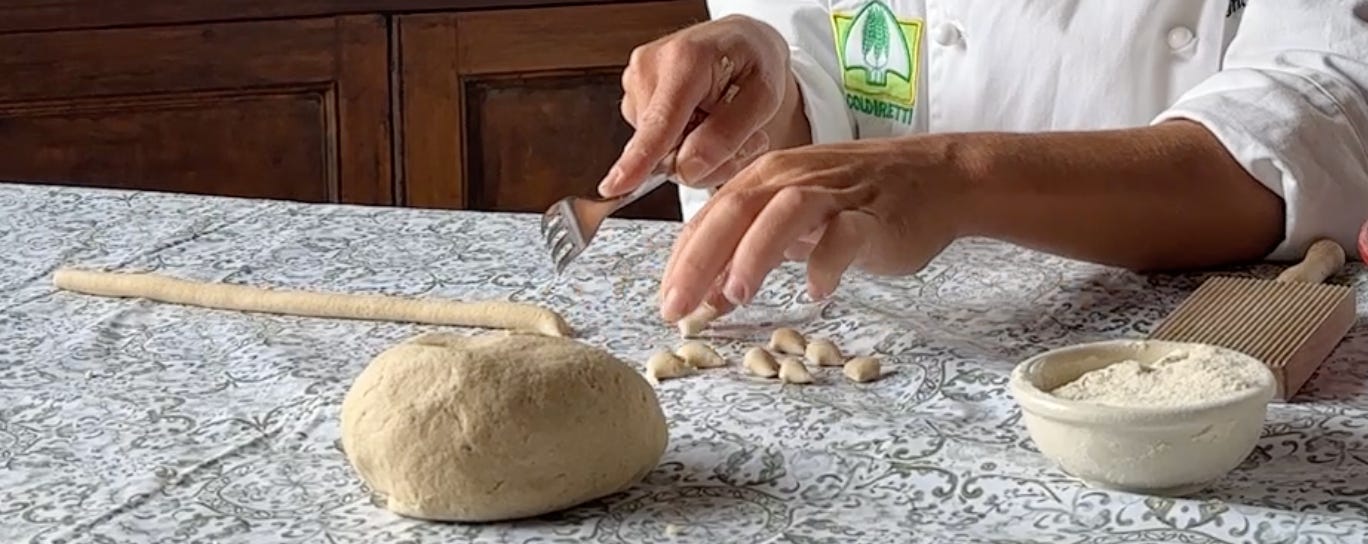

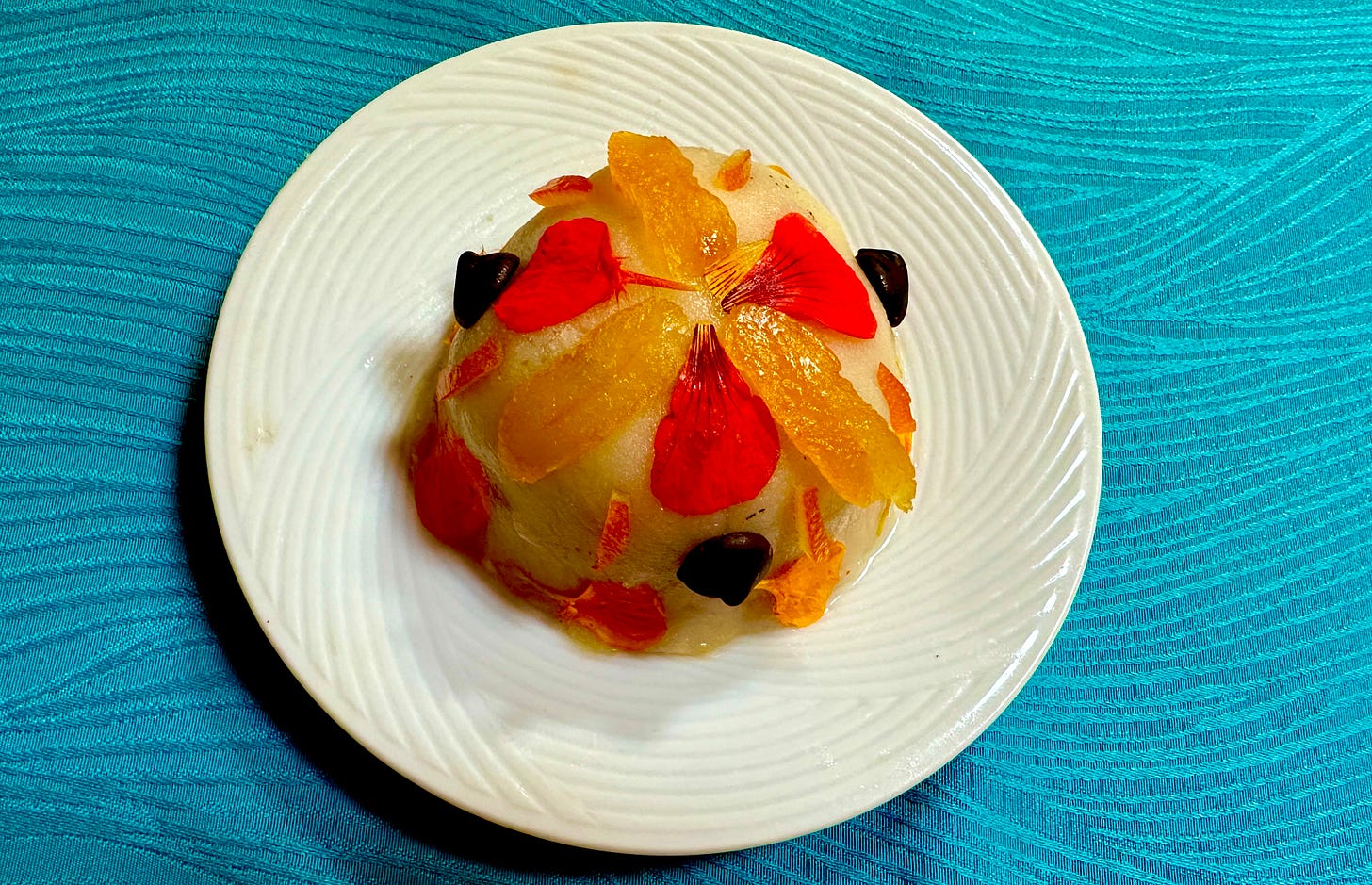
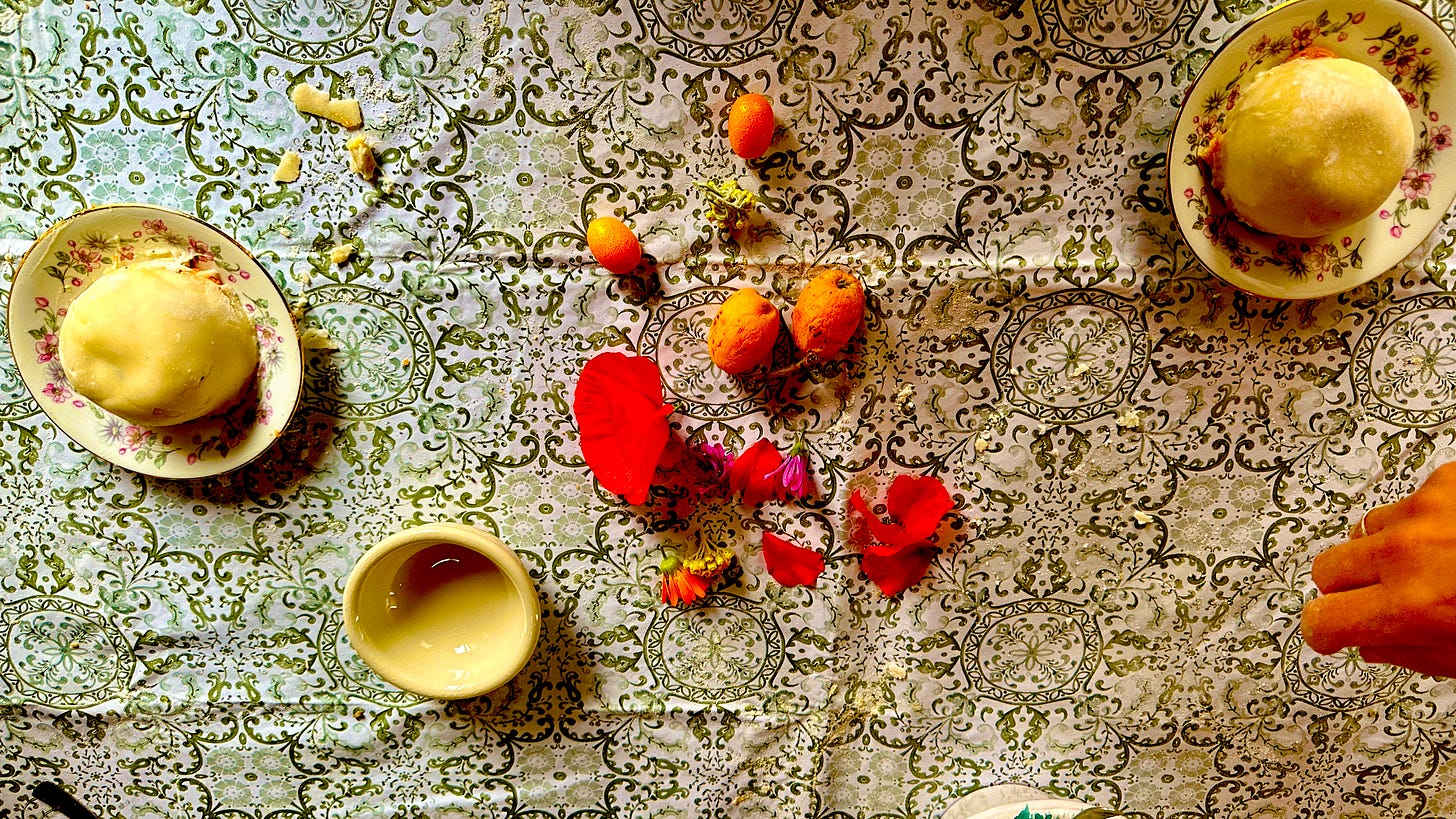
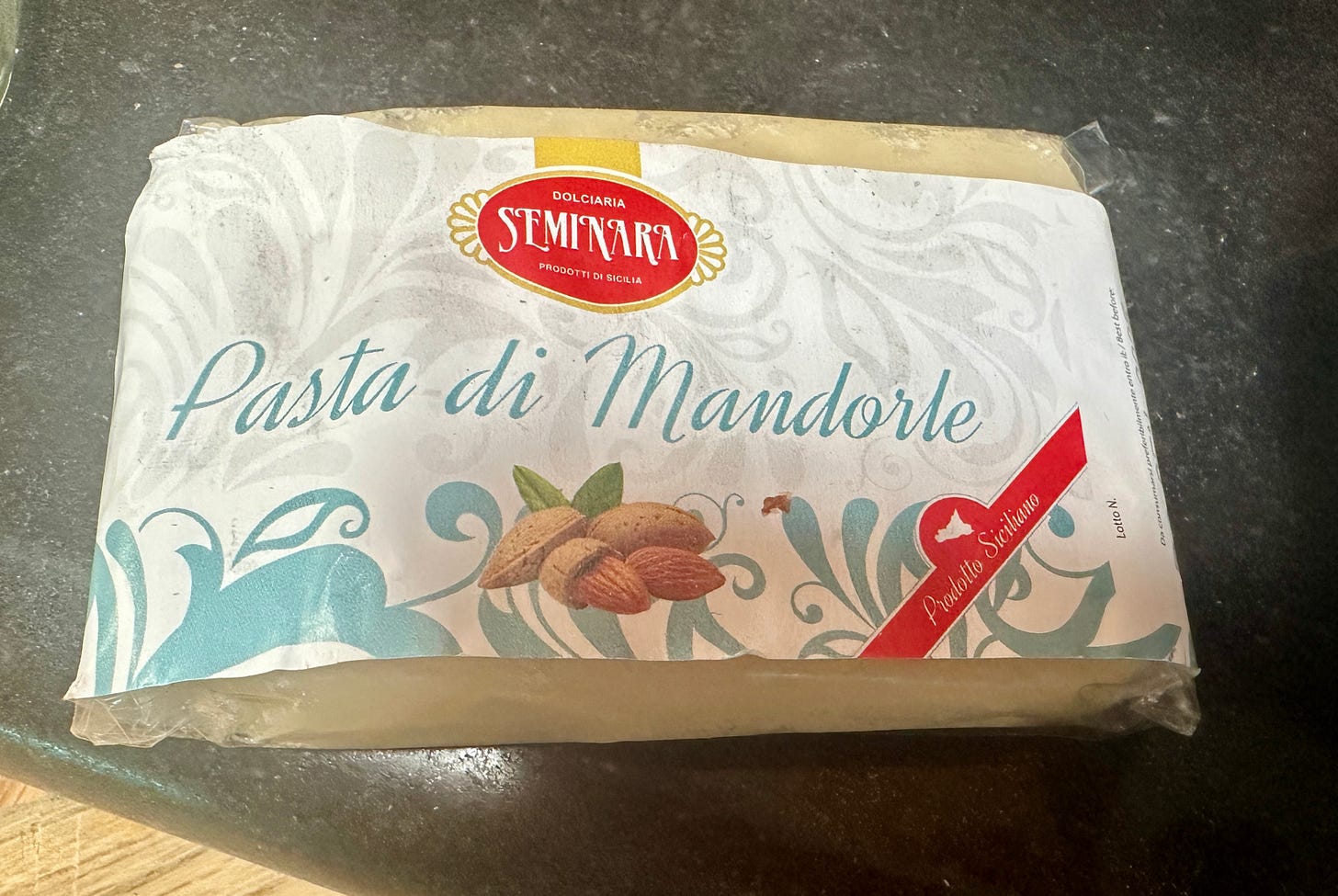
Great stuff, Ruth. Not sure how I missed this one!
I'm very seriously drooling. Wonderful recipes